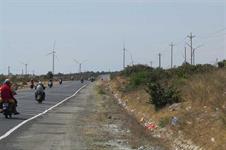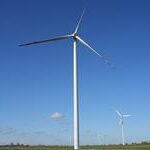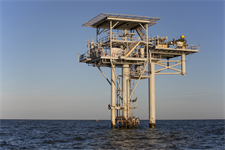Proposed Vietnam tariff cuts ‘jeopardise wind sector growth’
Energy Disrupter

Vietnam’s newly proposed cuts to the feed-in tariff (FIT) risk deterring investment and derailing the long-term growth of the country’s wind power sector, the Global Wind Energy Council (GWEC) has warned.
The Ministry of Industry and Trade (MOIT) has proposed reducing Vietnam’s onshore and intertidal wind tariffs to the equivalent of $70.20/MWh and $84.70/MWh respectively, with further cuts to come.
These tariffs would apply to projects commissioned between November 2021 and December 2022 and represent cuts of 17.4% and 13.6% respectively from previous rates.
Rates would fall further from 2023, according to the ministry’s letter to other governmental departments – to the equivalent of $68.10/MWh for onshore (down 2.9%) and to $82.10/MWh for intertidal (down 3.0%).
GWEC described these cuts as “one of the most dramatic reductions seen in any wind power market to date”, and suggested the proposal would drive investors away from Vietnam.
With developers already facing delays due to the coronavirus pandemic, alongside the general challenges encountered in an early stage wind market, GWEC fears they may struggle to close financing.
The industry body believes new wind installations could plummet by 80% in 2023 and a further 25% per year thereafter. This means thousands of missed job opportunities, and the loss of billions of dollars of investment in the country, the organisation added.
“The wind industry is on the cusp of achieving economies of scale and cost reductions which will make Vietnam the leading wind market in south-east Asia, but if the proposed FIT is implemented, it would jeopardise long-term development and ultimately result in higher energy prices at a time when the country’s energy demand is soaring,” said GWEC chief executive Ben Backwell.
“We have already seen this happen in wind markets in Europe and the Americas in the past with highly damaging effects, and it is vital that the government of Vietnam avoids creating a similar ‘boom and bust’, cycle so the country can benefit from the cost-competitive prices and socioeconomic benefits wind power can offer.”
Vietnam had raised its wind tariffs in September 2018, sparking great interest from investors and wind developers.
GWEC added that market entrants were also attracted by Vietnam’s strong wind resource potential, rising power demand and decarbonisation goals.
However, it now believes Vietnam will miss its target of 800MW of wind power capacity by the end of 2020.
GWEC forecasts the country will only reach 472MW of cumulative capacity by the end of the year as a result of delays due to the pandemic and permitting delays.
It had expected an installation rush in 2021 ahead of the current FIT expiring, but prolonged delays mean a lot of capacity due for installation next year may spill over into 2022.
















